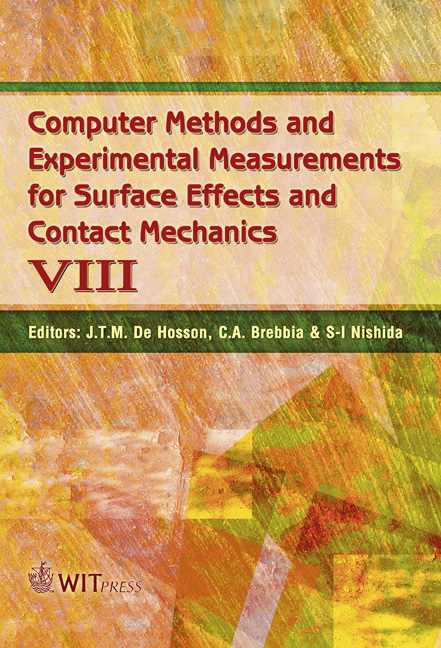Dimensional Reduction For Fast Simulations Of Contact Problems
Price
Free (open access)
Transaction
Volume
55
Pages
10
Published
2007
Size
318 kb
Paper DOI
10.2495/SECM070211
Copyright
WIT Press
Author(s)
T. Geike & V. L. Popov
Abstract
This paper explains a method of how to reduce the dimension of a contact problem under study. In particular it is shown how the three-dimensional adhesive contact can be simulated on the basis of a one-dimensional model. Single contacts as well as multi-asperity contacts with adhesion are discussed in some detail. If lubricants are present it is necessary to solve simultaneously for elastic deformations of contacting bodies and fluid flow between the bodies. We show that the problem can be considerably reduced in the case when the lubrication layer is so thin that the main contribution to the contact interaction comes from a small part of micro contacts with a distance much smaller than the average distance between the bodies. In this case, it is possible to model the dynamics of lubrication by non-conservative forces between surface elements depending both on the distance and relative velocity. The presented reduction method is currently used for the simulation of chemical–mechanical polishing. Keywords: elastic contacts, computational contact mechanics, friction, adhesion, lubrication, chemical–mechanical polishing. 1 Introduction Contact and friction play an important role in many technical applications ranging from traditional applications like bearings, clutches and brakes [1] over manufacturing technologies [2, 3] to modern applications like micro-electromechanical systems [4]. Further technological progress in these fields requires a better understanding of the friction phenomenon and the development of appropriate simulation tools. Many tribological systems belong to the class of fractal systems: in friction processes, both the microscopic and macroscopic scales may play an essential
Keywords
elastic contacts, computational contact mechanics, friction, adhesion, lubrication, chemical–mechanical polishing.





